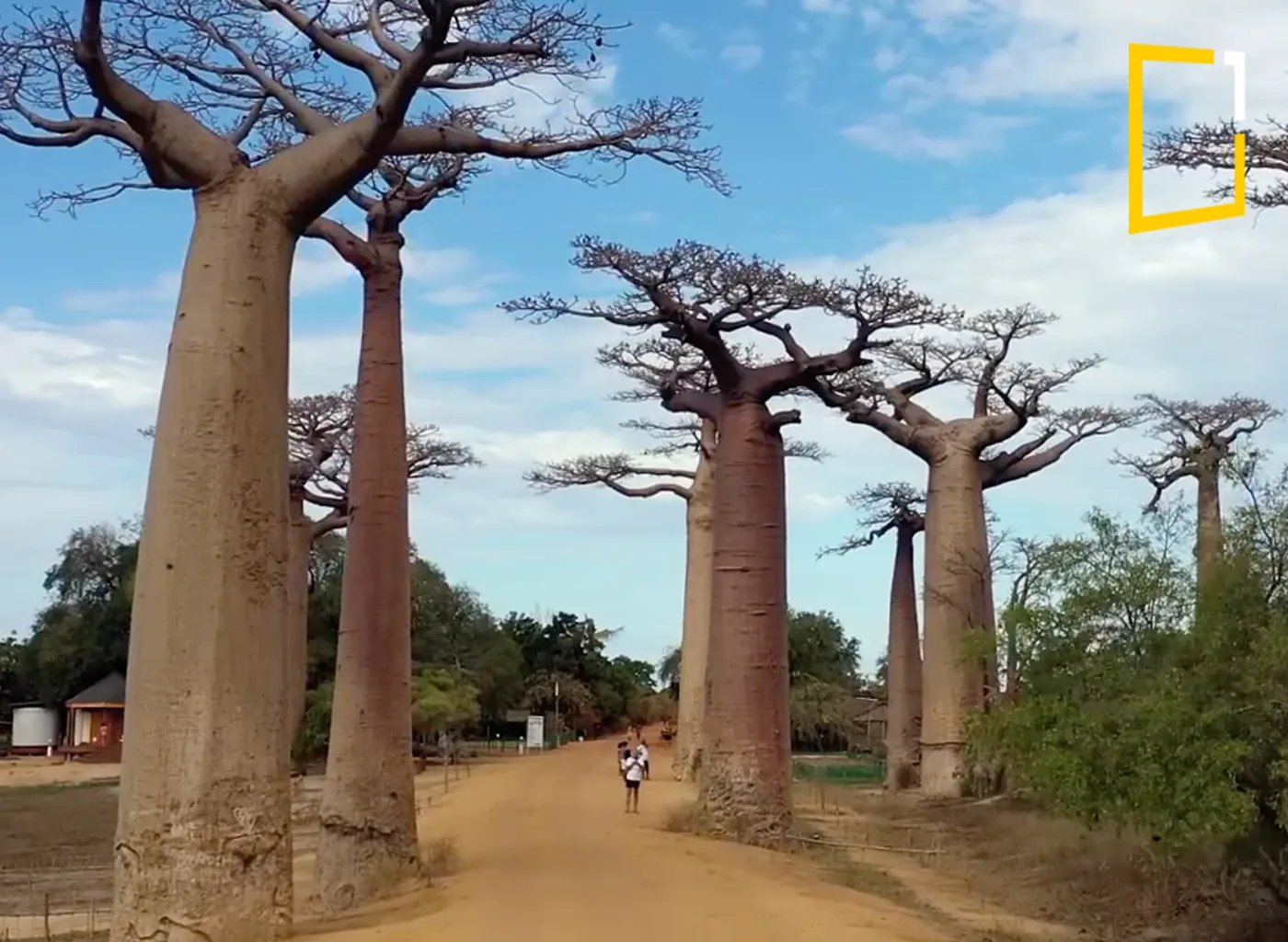The Baobab tree, often called the “Tree of Life,” is one of the most remarkable and iconic trees in the world. With its massive trunk, unique shape, and incredible ability to survive in harsh environments, the Baobab has become a symbol of resilience and life in some of the world’s most arid regions. Found primarily in Africa, as well as parts of Madagascar and Australia, this ancient tree has captured the imagination of cultures for centuries. Let’s dive into the fascinating world of the Baobab and uncover its secrets.
What Is a Baobab Tree?
The Baobab tree belongs to the genus Adansonia and has nine recognized species. Six species are native to Madagascar, two to mainland Africa, and one to Australia. The Baobab’s iconic appearance makes it stand out:
- Its thick, swollen trunk acts as a water reservoir.
- Its branches, often described as resembling roots reaching toward the sky, give it the nickname “upside-down tree.”
- Some Baobabs grow to 30 meters (98 feet) tall and have trunks with a circumference of over 25 meters (82 feet).

Ready to Spread Your Wings?
Dive into the fascinating world of bird watching with “Bird Watching for Beginners”—your ultimate guide to becoming a birding expert! Whether you’re a nature lover or a curious beginner, this ebook has everything you need to start your journey. Click here to download your copy today and start exploring the beauty of birds!
An Ancient Survivor
Baobabs are among the oldest living trees on Earth. Some are estimated to be over 2,000 years old, with certain specimens possibly even older. Their incredible longevity is attributed to their ability to store massive amounts of water—up to 120,000 liters (31,700 gallons)—in their trunks. This allows them to endure the extreme droughts of the savannah and desert environments they inhabit.
The Tree of Life
The Baobab tree earns its nickname, the “Tree of Life,” because of its crucial role in supporting ecosystems and human communities. Every part of the tree is valuable:
- Fruit: The Baobab fruit, often called the “monkey bread,” is rich in vitamin C, antioxidants, and calcium. It’s used to make juices, powders, and traditional medicines.
- Leaves: The leaves are edible and can be cooked like spinach or dried to make tea.
- Bark: The bark can be stripped and used to make rope, mats, and even clothing.
- Trunk: In some cases, hollowed-out Baobab trunks have been used as shelters, water storage, or even prisons in the past.
- Flowers: The large, white, and fragrant flowers are an important food source for bats, which are primary pollinators.

Cultural Significance
The Baobab tree holds a special place in African folklore, spirituality, and daily life. It is often seen as a symbol of strength, wisdom, and resilience. Many African tribes believe that Baobabs are sacred and home to spirits or ancestors. In Madagascar, the trees are a part of cultural heritage, with sacred groves protected as spiritual sites.
One legend even claims that the gods planted the Baobab tree upside down, which is why its branches look like roots!
Ecological Importance
Baobabs are keystone species, meaning they are vital to their ecosystems. Their flowers and fruits provide food for a variety of animals, including monkeys, elephants, and birds. Bats, the tree’s primary pollinators, help ensure the survival of Baobabs by spreading their seeds.
The trees also play a role in combating climate change. By absorbing carbon dioxide, they help reduce greenhouse gases in the atmosphere.

Threats to the Baobab Tree
Despite its resilience, the Baobab tree faces significant threats, including:
- Climate Change: Rising temperatures and changing rainfall patterns are stressing Baobabs in their native habitats.
- Deforestation: Land clearing for agriculture and development threatens Baobab populations.
- Overharvesting: Excessive harvesting of bark, fruit, and leaves can weaken the tree’s health.
Conservation efforts are underway to protect these ancient trees and ensure their survival for future generations.
How to Experience the Baobab
If you’re a nature lover, witnessing a Baobab tree in person is a bucket-list experience. Here are a few famous Baobab destinations:
Kruger National Park (South Africa): Home to some of the largest Baobabs in the region.
Avenue of the Baobabs (Madagascar): A stunning natural corridor of towering Baobabs, offering breathtaking views at sunset.
Kubu Island (Botswana): A mystical place surrounded by Baobabs on a dry salt pan.
—————————————————————
Thanks for joining this wild ride. Stay curious, stay tuned, and let’s make our world brighter!
Subscribe to our channel and stay tuned for more intriguing mysteries and scientific wonders. Together, let’s uncover the secrets of the Earth and expand our understanding of this fascinating world.
Check out the latest blog and video on YouTube and learn something new today.
Attention, all readers! To deepen your understanding and stay informed on the latest news and trends, be sure to click on the link to access more informative articles.
Join the family by liking us on Facebook, or follow us on Twitter and Instagram.
If you liked this story, sign up for the weekly OneMinuteExplore features newsletter called “The Essential List”. A handpicked selection of stories from OneMinute Nature, Wildlife, Culture, Travel, Stories, and more… delivered to your inbox every Weekend.
👉 We may earn a commission from purchases made through links in this content, but it won’t affect your price. Rest assured, our recommendations are based on thorough research and genuine belief in the products. Your support through these links helps us continue providing valuable content. Thank you for your support!













